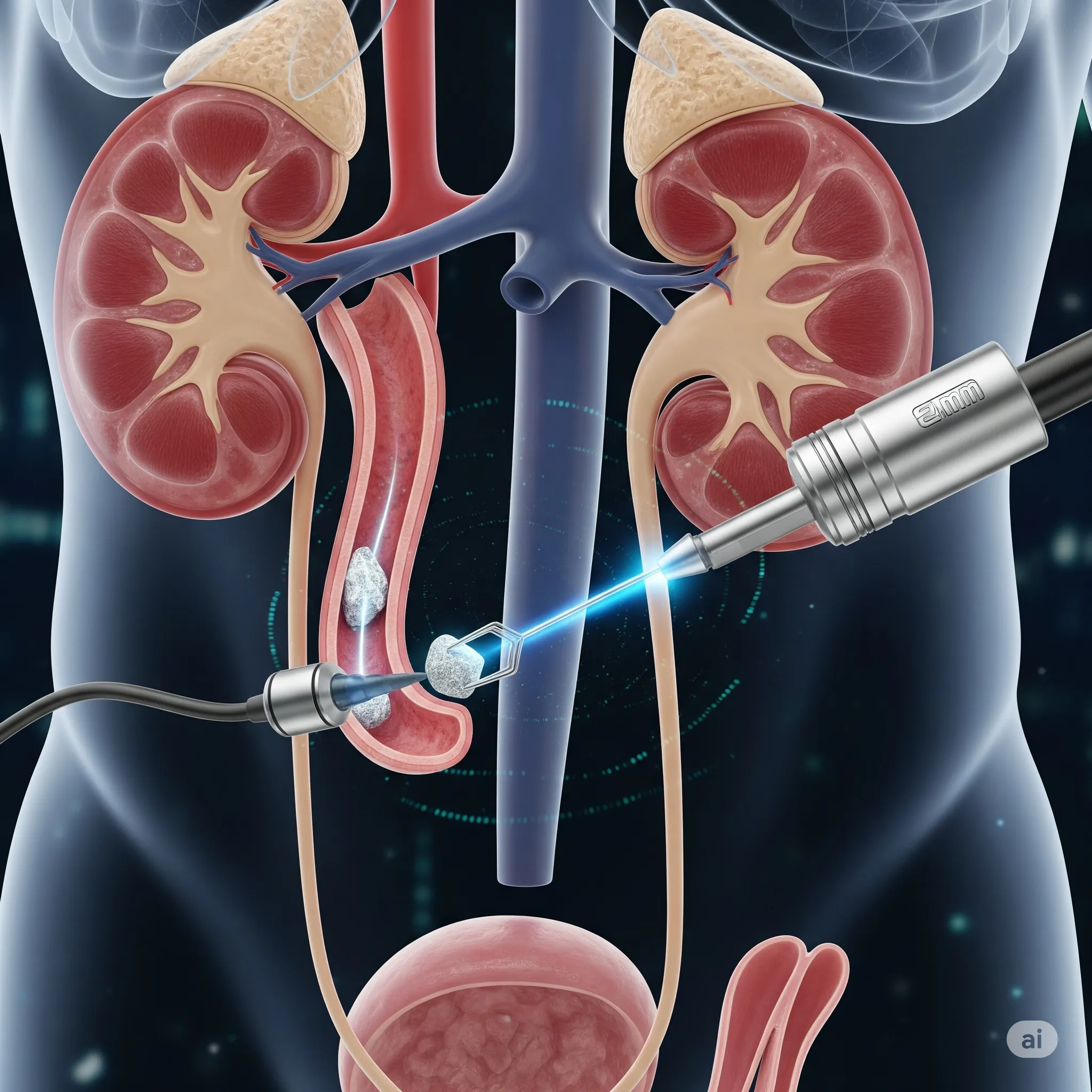Specialized treatment for ureteric and renal stones using advanced minimally invasive techniques

1-2 hours depending on stone characteristics
General or spinal anesthesia
Quick Recovery
Advanced Technology
Our specialized ureteric and renal stone removal program utilizes advanced endoscopic techniques to safely and effectively remove stones from the ureter and kidney. We employ state-of-the-art equipment and minimally invasive approaches to ensure optimal outcomes.
Pre-operative imaging and assessment
Endoscopic visualization of the stone
Stone fragmentation using laser or pneumatic energy
Complete stone removal or fragment extraction
Stent placement if required
Most patients go home the same day or after overnight stay. Return to normal activities in 1-2 weeks.
Follow-up at 1-2 weeks and imaging at 6-8 weeks to confirm stone clearance
Patients with ureteric or renal stones causing symptoms, obstruction, or recurrent infections.
As with any medical procedure, there are potential risks:
Our experienced medical team will discuss all risks and benefits during your consultation.
The procedure typically takes 1-2 hours depending on stone characteristics. However, the exact duration may vary based on individual circumstances and complexity of the case.
Most patients go home the same day or after overnight stay. Return to normal activities in 1-2 weeks. Our medical team will provide detailed post-procedure instructions to ensure optimal healing.
Varies by stone location and complexity. Most insurance plans cover the procedure. We recommend checking with your insurance provider for specific coverage details and can assist with pre-authorization if needed.
During your consultation, our specialist will conduct a thorough evaluation, discuss your symptoms and medical history, explain the treatment options, and answer all your questions. We'll also provide detailed information about the procedure, expected outcomes, and post-treatment care.
Emergency
+91-888 66 88 744
Appointments
+91-888 66 88 744
Varies by stone location and complexity. Most insurance plans cover the procedure.